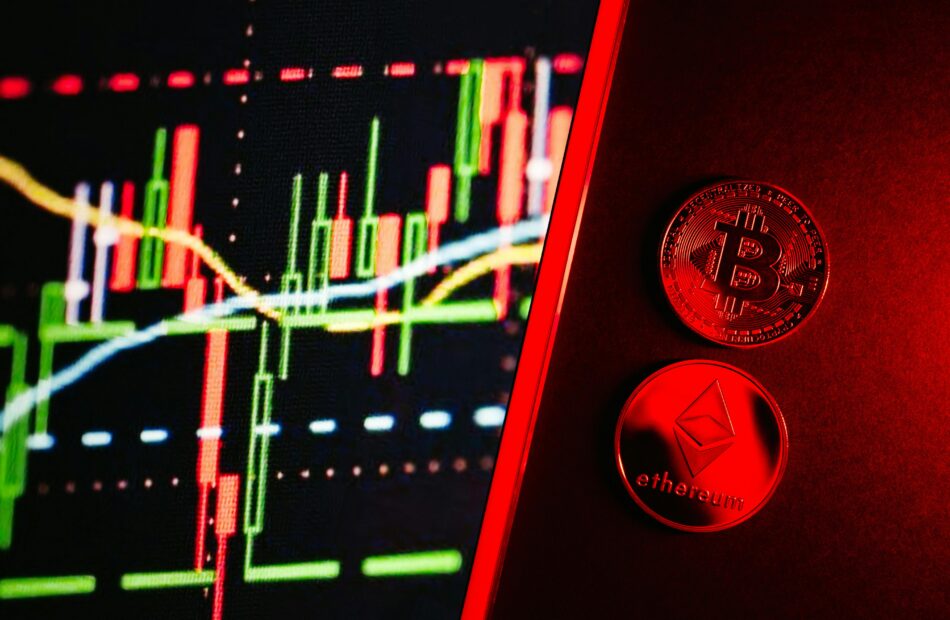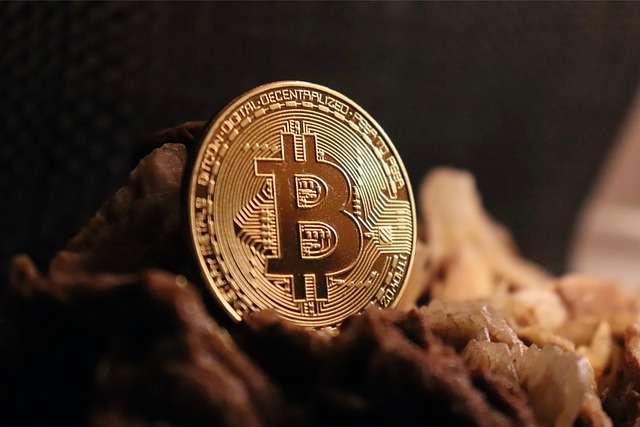Ethereum price falls to 2-year low, but pro traders still have hope
Ether (ETH) price dropped to $1,410 on April 7, marking its lowest level since March 2023. This sharp decline triggered liquidations of leveraged ETH futures worth over $370 million in 2 days, according to CoinGlass data. However, the altcoin managed to recover above the $1,500 mark as the S&P 500 index reclaimed its psychological 5,000 support level.Ether/USD (blue) vs. total crypto market capitalization (magenta). Source: TradingView / CointelegraphOver the past 30 days, Ether has underperformed the broader cryptocurrency market by 14%. Despite this, professional traders are not yet ready to turn bearish, as suggested by Ethereum’s derivatives data and onchain metrics. While this data does not guarantee that Ether’s price has reached its bottom, the reduced demand for bearish positions below $1,600 offers some reassurance for bullish investors.Ether 2-month futures annualized premium. Source: laevitas.chOn April 7, the Ether monthly futures premium rose to 4% after dipping to 3% earlier in the day. Although still below the neutral threshold of 5%, this marks an improvement from March 31, when the indicator hit a low of 2%. Currently, there is a noticeable lack of demand from long positions (buyers), but this is not unusual following a steep 30% drop in ETH’s price over the past month.Ether is a victim of worsening macroeconomic conditionsInvestors remain concerned that escalating global trade tensions could lead to an economic recession and reduce interest in risk-on assets. This scenario also weakens the potential positive impact of a possible interest rate cut during the US Federal Reserve’s (Fed) next meeting on May 6-7. Typically, such a move would benefit the cryptocurrency market by lowering returns on fixed-income investments.Despite US President Donald Trump’s strong push for interest rate cuts, as expressed in his Truth Social post on April 7, Fed Chair Jerome Powell remains cautious about inflation trends. Powell reportedly stated on April 4: “It is too soon to say what will be the appropriate path for monetary policy,” according to Yahoo Finance.Adding further pressure to Ether’s price was Ethereum developers’ decision to delay the Pectra upgrade, originally scheduled for April. Developers have now set May 7 as the target date for its mainnet launch but provided no specific reason for the delay. This comes even though the Hoodi testnet upgrade was successfully implemented on March 26.Ether derivatives display moderate resilience while Ethereum TVL jumps to an all-time highGiven the negative news flow, one might have expected Ether bears to dominate the market entirely. However, derivatives data suggests that bears are not as confident as anticipated. When traders foresee a correction, put (sell) options tend to trade at a premium, pushing the 25% delta skew metric above 6%. Conversely, during bullish periods, this indicator typically falls below -6%.Ether 30-day options skew (put-call) at Deribit. Source: Laevitas.chCurrently, the ETH options skew stands at 10%, the same level as March 31, which remains within bearish territory. However, this reading is significantly less extreme compared to May 2024, when it peaked at 20% amid a sharp ETH price drop from $3,700 to $2,860 within five weeks. In essence, while Ether derivatives markets signal bearish sentiment, they do not reflect panic levels.Onchain data for Ethereum shows resilience despite broader market challenges. The total value locked (TVL) on the Ethereum network reached an all-time high of 30.2 million ETH on April 6—a 22% increase compared to the previous month. This growth outpaced Solana’s 12% increase in SOL (SOL) terms and BNB Chain’s 16% TVL rise during the same period. Ultimately, macroeconomic conditions remain the primary driver of cryptocurrency demand. However, when analyzing Ether derivatives data and Ethereum’s TVL performance, it appears that ETH’s price downside may be limited.This article is for general information purposes and is not intended to be and should not be taken as legal or investment advice. The views, thoughts, and opinions expressed here are the author’s alone and do not necessarily reflect or represent the views and opinions of Cointelegraph.
US govt. sets AI policies across agencies
The US Office of Management and Budget (OMB) issued two directives specifying policies and deadlines for deploying AI tools that enhance public services, providing a roadmap for implementing US President Donald Trump’s executive order advance US “dominance” in the use and development of artificial intelligence.According to two memorandums from April 3, all government agencies “should invest in the AI marketplace and maximize the use of AI products and services that are developed and produced in the United States.” The memorandums list various deadlines for the adoption of AI, including a 270-day deadline to update policies and procedures.In early 2025, Trump took significant steps to reshape US policy on emerging technologies by repealing former President Joe Biden’s 2023 executive order on AI safety — arguing it imposed excessive regulations that stifled innovation — and declaring his intention to make the US the “world capital”of AI and cryptocurrency. Critics, however, have raised concerns that removing safety frameworks could leave the public vulnerable to AI-related risks.OMB memorandum M-25-21. Source: White HouseSome common AI models developed and produced in the United States include OpenAI’s ChatGPT, Google’s Gemini, Meta’s Llama, and Elon Musk’s Grok. The directive from the OMB follows Trump’s promises to boost American dominance in this new sector of technology.Related: Did ChatGPT come up with Trump’s tariff rate formula?In January 2025, Trump announced an AI infrastructure project called “Stargate,” aimed at building AI data centers across the country.The surging demand for AI infrastructure has prompted Bitcoin miners to pivot and expand their operations to support the growing needs of the AI sector.At the same time, the convergence of AI and blockchain fueled a rally in AI-related tokens throughout 2024. However, that momentum has sharply reversed in 2025. Despite continued enthusiasm around AI’s long-term potential, tokens linked to the technology have seen steep losses, shedding over 42% of their market cap over the past 12 months, according to data from CoinMarketCap. Performance of top AI and big data tokens. Source: CoinMarketCapMarket focus has shifted toward memecoins, while broader macroeconomic uncertainty has stoked fear across capital markets.For the Trump administration, winning the AI race continues to be a priority. In April 2025, David Sacks, the White House’s AI and crypto czar, said that the release of Meta’s Llama 4 puts the US back in position to win the AI race. That race had been upended in January 2025 with the release of DeepSeek, an AI tool produced in China.Magazine: AI Eye: Vitalik on AI apocalypse, LA Times both-sides KKK, LLM grooming
Bitcoin, showing 'signs of resilience', beats stocks, gold as equities fold — Binance
Bitcoin (BTC) is showing “signs of resilience” even as stocks and the broader cryptocurrency market plunge amid a global market sell-off after US President Donald Trump imposed sweeping tariffs on US imports last week, Binance Research said. As of mid-day trading on April 7, Bitcoin is up almost 1% to nearly $79,000. Meanwhile, the S&P 500 — an index of large US stocks — is essentially flat and front-month gold futures are down around 1.5%, according to Google Finance.“Even in the wake of recent tariff announcements, BTC has shown some signs of resilience, holding steady or rebounding on days when traditional risk assets faltered,” Binance, the world’s largest cryptocurrency exchange, said in an April 7 research report. Notably, Bitcoin’s supply of long-term holders continues to rise, “reflecting conviction and limited capitulation during recent volatility,” Binance said.On April 2, Trump said he was putting tariffs of at least 10% on most imports into the United States and adding additional “reciprocal” tariffs on goods from 57 countries. Since then, major US stock indices — including the S&P 500 and Nasdaq — dropped by more than 10% as traders braced for a looming trade war. Bitcoin is still down more than stocks — about 12% — but has held up better than crypto’s overall market capitalization, which is down roughly 25% since April 2. “Now, with reciprocal tariffs emerging and global markets adjusting to the prospect of prolonged trade fragmentation, much could hinge on BTC’s ability to reassert its safe haven narrative,” the report said. Source: Binance ResearchRelated: Crypto stocks down, IPOs punted amid tariff tumultChanging asset correlationsBitcoin’s correlation with gold — historically considered the ultimate safe haven asset during times of extreme macroeconomic uncertainty — has been low, averaging around 0.12 over the past 90 days, Binance said. The cryptocurrency has a closer correlation with equities of 0.32. However, “despite short-term swings, BTC may still have room to reassert a more independent macro identity,” according to the exchange. “The key question is whether BTC can return to its long-term pattern of low correlation with equities,” noted the report. Source: Binance ResearchFor now, gold appears to be the preferred safe haven asset among fund managers, Binance said. It cited a survey in which 58% of respondents said they would prefer to hold gold during a trade war versus only 3% for Bitcoin. “Market participants will be watching closely to see if BTC is able to retain its appeal as a non-sovereign, permissionless asset in a protectionist global economy,” Binance said.Magazine: New ‘MemeStrategy’ Bitcoin firm by 9GAG, jailed CEO’s $3.5M bonus: Asia Express
Price analysis 4/7: SPX, DXY, BTC, ETH, XRP, BNB, SOL, DOGE, ADA, LEO
Bitcoin (BTC) made a sharp comeback and is trading near the $78,000 level. The largest cryptocurrency by market capitalization tumbled below the psychological support of $80,000 after the US stock futures market opened sharply lower on April 6. The selling continued on April 7, and Bitcoin hit a new year-to-date low of $74,508, but lower levels attracted solid buying by the bulls.The bearish macroeconomic picture sent the Fear & Greed Index of the US stock markets to just 4/100. Usually, such periods of panic selling form a bottom as most weak hands and leveraged players capitulate. Once that happens, the recovery is likely to be sharp.Daily cryptocurrency market performance. Source: Coin360However, it is a good strategy to remain cautious and not overleverage on trades in the short term as the volatility may remain high. Even Michael Saylor’s firm Strategy, the world’s largest publicly listed corporate holder of Bitcoin, stalled its Bitcoin purchases last week.Could Bitcoin sustain the recovery, or will higher levels attract sellers? How are the altcoins positioned? Let’s analyze the charts to find out.S&P 500 Index price analysisThe S&P 500 Index (SPX) gapped down on April 7 for the third consecutive trading day, indicating panic among traders.SPX daily chart. Source: Cointelegraph/TradingViewThe index plunged below 4,950 but is finding support near the 61.8% Fibonacci retracement level of 4,884. Buyers pushed the price to 5,246, but the higher levels attracted selling, as seen from the long wick on the candlestick. If the price turns down and breaks below 4,835, the decline could extend to 4,700.The relative strength index (RSI) has dropped deep into the oversold zone, suggesting a relief rally in the near term. Buyers are expected to face significant resistance at 5,400 and then at the 20-day exponential moving average (5,558).US Dollar Index price analysisThe US Dollar Index (DXY) broke below the 103.37 support on April 3 and reached near the vital support at 101. DXY daily chart. Source: Cointelegraph/TradingViewThe solid rebound off the 101 support shows that lower levels are attracting buyers. Sellers will try to halt the relief rally at the 20-day EMA (103.95). If the price turns down from the 20-day EMA, the bears will again try to pull the price down to 101.Alternatively, a break and close above the 20-day EMA brings the large 101 to 108 range into play. The index could then rally to the 50-day simple moving average (105.62), which may act as a barrier.Bitcoin price analysisBitcoin fell below the $76,606 support on April 7, but the long tail on the candlestick shows buying near $73,777.BTC/USDT daily chart. Source: Cointelegraph/TradingViewThe positive divergence on the RSI suggests that the bearish momentum is weakening, but it is not a signal that should be acted upon without a bullish price confirmation. A break and close above the resistance line could suggest that the corrective phase may be over. The BTC/USDT pair could rise to $89,000 and later to $95,000.Instead, if the price turns down from the resistance line, it suggests that bears remain in command. Sellers will again try to sink the pair below $73,777. If they manage to do that, the pair could collapse to $67,000.Ether price analysisEther (ETH) resumed its downtrend on April 6 after the price slipped below the $1,754 support. The failure to start a bounce off $1,550 shows a lack of demand from the bulls.ETH/USDT daily chart. Source: Cointelegraph/TradingViewThe selling has pulled the RSI into the oversold territory, suggesting a relief rally could be around the corner. If the price turns up from the current level, the ETH/USDT pair could rise to $1,754. If the price turns down from $1,754, it signals selling on rallies. That increases the likelihood of a drop to $1,350 and then to $1,150.Buyers will have to push and maintain the price above the 20-day EMA ($1,853) to suggest that the downtrend could be ending.XRP price analysisXRP (XRP) turned down from the 20-day EMA ($2.16) on April 6 and closed below the $2 support, completing a head-and-shoulders pattern.XRP/USDT daily chart. Source: Cointelegraph/TradingViewThe selling continued on April 7, pulling the price below the immediate support at $1.77. Buyers will try to start a recovery but are likely to face solid selling at $2. If the XRP/USDT pair turns down from $2, it will signal that the bears have flipped the level into resistance. That increases the possibility of a drop to $1.27.The first sign of strength will be a break and close above the $2.20 level. That suggests the markets have rejected the breakdown.BNB price analysisBNB (BNB) turned down sharply from the 20-day EMA ($597) on April 6 and plunged below the 61.8% Fibonacci retracement level of $559.BNB/USDT daily chart. Source: Cointelegraph/TradingViewThe BNB/USDT pair bounced off the $520 support, but the recovery is expected to face selling at the moving averages. If the price turns down from the current level or the 20-day EMA, it heightens the risk of a fall to $500 and next to $460.The bulls will have to push and maintain the price above the downtrend line to signal a comeback. The pair may rise to $644 and then to $686. That suggests the pair may remain inside the large $460 to $745 range for some more time.Solana price analysisSolana (SOL) collapsed below the $120 to $110 support zone on April 6, indicating the resumption of the downtrend.SOL/USDT daily chart. Source: Cointelegraph/TradingViewThe SOL/USDT pair rebounded off $95, but on the way up, the bears are expected to pose a strong challenge between the $110 and $120 zone. If the price turns down sharply from the overhead zone, the pair may fall to $80.Time is running out for the bulls. If they want to make a comeback, they will have to quickly push the price above the 20-day EMA ($124). The pair may then ascend to the 50-day SMA ($137).Related: Was Bitcoin price drop to $75K the bottom? — Data suggests BTC to stocks decoupling will continueDogecoin price analysisThe failure of the bulls to push Dogecoin (DOGE) above the 20-day EMA ($0.17) attracted another round of selling on April 6. DOGE/USDT daily chart. Source: Cointelegraph/TradingViewThe DOGE/USDT pair dipped below the critical $0.14 support, but the long tail on the candlestick shows solid buying at lower levels. Buyers are expected to defend the $0.14 level with all their might because if they fail to do that, the pair could descend to $0.10.The 20-day EMA is the crucial resistance to watch out for on the upside. A break and close above the 20-day EMA suggest that the bearish momentum is weakening. The pair may then climb to the 50-day SMA ($0.19).Cardano price analysisCardano (ADA) turned down and broke below the $0.58 support on April 6, indicating that bears remain in control.ADA/USDT daily chart. Source: Cointelegraph/TradingViewThe ADA/USDT pair dropped near the critical support at $0.50, where the buyers stepped in. That started a recovery, which is expected to face selling at $0.58 and again at the 20-day EMA ($0.67). If the price turns down from the moving averages and breaks below $0.50, it signals the start of the next leg of the downward move toward $0.40.Buyers will have to drive and maintain the pair above the 50-day SMA ($0.73) to signal that the bears are losing their grip.UNUS SED LEO price analysisUNUS SED LEO (LEO) turned down from the 50-day SMA ($9.63) on April 4 and closed below the uptrend line of the ascending triangle pattern.LEO/USD daily chart. Source: Cointelegraph/TradingViewThat invalidated the bullish setup, which is a negative sign. The moving averages have started to turn down, and the RSI is near the oversold territory, signaling that the bears have the edge. There is minor support at $8.84, but if the level cracks, the LEO/USD pair could plummet to $8.30.Buyers have an uphill task ahead of them if they want to prevent the downside. They will have to push the price above $9.90 to seize control.This article does not contain investment advice or recommendations. Every investment and trading move involves risk, and readers should conduct their own research when making a decision.
Bloomberg analyst predicts Bitcoin could sink back to $10,000
Diving into the chaos of global markets, Bloomberg Senior Commodity Strategist Mike McGlone warns more turmoil could be on the way.In an exclusive interview with Cointelegraph, McGlone points to deepening market sell-offs, intensified by US President Donald Trump’s ongoing tariff wars, and forecasts a sharp correction in crypto assets. He predicts Bitcoin could tumble to $10,000, citing excessive speculation and overvaluation within the digital asset space.”Look at Dogecoin — it still has a $20 billion market cap. It should go to zero. The whole space needs purging, just like the dot-com bubble did.”According to McGlone, Bitcoin’s current price could face significant downward pressure as part of the broader market resets. Despite the relatively supportive regulatory environment, he cautions that Bitcoin’s “digital gold” narrative is facing a stress test.“Anybody who bought ETFs is learning the hard way. They did not buy digital gold. They bought more of a value of leveraged beta. That’s a fact.”McGlone also noted that sharp-eyed traders may still find pockets of opportunities. However, investors should be prepared for a more extended recovery process rather than a quick “V-shaped” rebound like the one seen after the COVID-19 market crash. The stock market, he argues, has grown disproportionately large relative to the US economy — and now, a reset appears inevitable.“Back then, the US stock market was around 1.5 to GDP. We popped up to 2.2 or so to GDP. Markets just got too high.”To gain deeper insights into his analysis and hear more of his predictions, make sure to watch Cointelegraph’s full interview.
Bitcoin, stocks crumble after ‘90 day tariff pause’ deemed fake news — BTC whales keep accumulating
Global financial markets continued to tumble on April 7, as US equities dropped more than 3%, wiping more than $2 trillion in value on market open. The pullback saw the S&P 500 drop 2.79%, with the index officially entering a bear market, following a 20% decline from its recent all-time highs.However, the SPX momentarily rallied by 6% after a rumor began to spread on X that US President Donald Trump was contemplating a 90-day tariff pause. Bitcoin (BTC) price also rallied above $80,000, but after 30 minutes of positive price action, the White House confirmed that the rumor was not true. Source: XThe S&P 500 is currently in positive territory for the day. Still, despite this uptick, the sustainability of the recovery remains uncertain as bearish undercurrents remain the same as before the tariff-pause rumor started to circulate.In Asia trading sessions, where economies heavily depend on favorable global trade, stock markets plummeted. Hong Kong’s equity index suffered a staggering 13% drop, marking its worst performance since the Asian financial crisis. Major indexes in Shanghai, Taipei, and Tokyo also saw sharp declines, ranging from 7% to 10%.In fact, the Nikkei 22 futures suspended trading after it hit circuit breakers during its session. Tensions continued to escalate between the US and China after President Trump confirmed an additional 50% tariff on Chinese exports on April 9 if the country did not withdraw its initial 34% tariffs on the US by April 8. Related: Bitcoin price retakes $80K as US stocks avoid ‘Black Monday’ meltdownBitcoin hits yearly lows, but BTC whales are accumulatingAfter initially demonstrating a decoupling from the US indexes on April 3 and April 4, Bitcoin price dipped 6.5% over the weekend and dropped to new yearly lows at $74,457 on April 7. This is Bitcoin’s lowest price since Nov. 7, with speculators expecting further drawdowns in the charts. Julio Moreno, head of research at CryptoQuant, said, “Don’t catch the falling knife. Conditions have not improved for Bitcoin yet. Only one bull signal is on in the Bull Score Index.”On a positive note, Glassnode data revealed that BTC whales (holding over 10,000 BTC) are intensifying accumulation while smaller holders continue to distribute. The Accumulation Trend Score for whales briefly hit a perfect 1.0 around April 1, reflecting a 15-day buying spree—the most significant since late August 2024. Trend Accumulation Score by Bitcoin holders. Source: X.comSince March 11, whales have added 129,000 BTC, scoring at 0.65, indicating steady accumulation. Meanwhile, cohorts holding less than 1 BTC to 100 BTC have shifted to distribution, with scores dropping to 0.1–0.2 for most of 2025. This trend aligns with Bitcoin finding support at $74,000, a level backed by over 50,000 BTC held by investors dormant since March 10. Meanwhile, Axel Adler Jr., a Bitcoin researcher, also pointed out that the supply dynamics metric indicates that the new Bitcoin supply is currently outpacing the annual change in active coins. A positive uptick indicates growing demand or accumulation in the market, and historically, such increases in this metric have coincided with Bitcoin price recoveries.Bitcoin yearly supply change and new coins. Source: Axel Adler Jr. Related: Was Bitcoin price drop to $75K the bottom? — Data suggests BTC to stocks decoupling will continueThis article does not contain investment advice or recommendations. Every investment and trading move involves risk, and readers should conduct their own research when making a decision.
Pakistan appoints Changpeng Zhao as crypto adviser as adoption heats up
Former Binance CEO Changpeng “CZ” Zhao has been appointed as an adviser to Pakistan’s Crypto Council, a newly formed regulatory body tasked with overseeing the country’s embrace of blockchain technology and digital assets. The appointment was confirmed by Pakistan’s finance ministry and reported by Bloomberg on April 7. Zhao will advise the regulatory body on cryptocurrency regulation, infrastructure and adoption, Bloomberg reported.CZ is seen signing documents during his appointment by Pakistan’s Ministry of Finance. Source: Business RecorderZhao is one of the most recognizable names in crypto, having served as CEO of Binance between 2017 and 2023. He resigned as CEO of the exchange in November 2023 after pleading guilty to charges related to violating US money laundering laws. He was later sentenced to four months in prison. For Pakistan, Zhao is a high-profile appointment that could potentially help the country lure foreign investment in an industry that has taken on new strategic importance.In March, the CEO of Pakistan’s Crypto Council, Bilal bin Saqib, told Bloomberg that the country plans to develop a clear regulatory framework for digital assets.“Pakistan is done sitting on the sidelines,” Saqib said. “We want to attract international investment because Pakistan is a low-cost high-growth market with […] a Web3 native workforce ready to build.”Related: Binance co-founder Changpeng Zhao to advise Kyrgyzstan on blockchain techCrypto in Pakistan: Adoption and pain-pointsPakistan has long been considered a potential hub for crypto adoption due to its growing population, large diaspora and thriving black market for foreign exchange trades. The value of cash sent to Pakistan through formal remittance channels surged at the end of last year amid a countrywide crackdown on black market dollar trades.“This increase might be because remittances that had previously been sent using the black market are now being sent via official channels,” John Ashbourne, an economist at Fitch Solutions, told Bloomberg. Pakistan ranked highly in Chainalysis’ 2024 crypto adoption index, largely due to strong retail adoption and transactions at centralized services.In 2024, Pakistan ranked ninth among Central and Southern Asia and Oceania (CSAO) countries. Source: ChainalysisStablecoins have emerged as one of crypto’s most prominent use cases in regions with high demand for US dollars due to currency depreciation.Although data on stablecoin usage in Pakistan is slim, a 2023 KuCoin survey revealed that 33% of local crypto investors use digital assets to hedge against the rupee’s devaluation. A more recent survey conducted by Bitget found that 46% of respondents in South Asia — a region that includes India, Pakistan, Bangladesh and others — use digital assets for speed and accessibility of transactions. Magazine: How crypto laws are changing across the world in 2025
Hodlers on edge: Trump’s tariffs shake Bitcoin, but some are buying the dip
Bitcoin holders are facing renewed pressure following US President Donald Trump’s trade tariff announcement, which sent shockwaves through global financial markets, including cryptocurrencies.Even with Bitcoin (BTC) hodlers under pressure, some community members, including BitMEX co-founder Arthur Hayes, are not missing a chance to buy BTC at a discount.“Been nibbling on BTC all day, and shall continue,” Hayes wrote on X on April 7 as the Bitcoin price hovered around $75,000.Source: Arthur HayesHe also predicted that Bitcoin’s dominance in the broader crypto market could grow. He expects the current 60.5% share of the market to go toward 70%.Traders are “powerless to second-guess Trump’s next move”While Hayes is stacking sats during the tariff-fueled market bloodbath, his investment firm, Maelstrom, reportedly sold BTC in December 2024, when Bitcoin traded near its all-time high of about $100,000.In a blog post titled “Trump Truth,” Hayes had predicted a massive crypto crash after Trump’s inauguration in January, forecasting a clash in market optimism over his crypto policies and the realities of policy implementation.Related: Michael Saylor’s Strategy halts Bitcoin buys despite dip below $87K“The gospel of Bitcoin evangelists to never sell and buy every dip is testing the nerves of hodlers,” Petr Kozyakov, co-founder and CEO at the payments infrastructure platform Mercuryo, told Cointelegraph.Bitcoin price in the past year. Source: CoinGecko“Amateur retail traders and the citadels of high finance appear equally powerless to second-guess Trump’s next move,” he said. He added that many traders are waiting on the sidelines, weighing whether the market has been oversold. Despite short-term uncertainty, Kozyakov remains bullish on Bitcoin’s long-term outlook as “the new digital gold.”“Traders are cautiously waiting on the sidelines for opportunities to re-enter the market and weighing if there may be evidence of overselling.”Kozyakov is far from being alone in seeing a promising future for Bitcoin as “new digital gold.” ARK Invest founder Cathie Wood is also bullish on Bitcoin vs. gold, claiming in February that the “substitution” of gold for Bitcoin has already happened.Bitcoin will fail without payment use case, says Jack DorseyDespite the bullish sentiment of Hayes and Wood, others in the crypto community have cautioned that Bitcoin needs more than just a store-of-value narrative to remain relevant.Jack Dorsey, former CEO of Twitter and serial crypto entrepreneur, is skeptical about whether BTC can succeed as a pure store of value.“If it [Bitcoin] just ends up being a store of value and nothing more, I don’t think it gains relevance at all,” Dorsey said on a “Presidio Bitcoin” podcast episode on April 2.Jack Dorsey on a “Presidio Bitcoin” podcast episode on April 2. Source: YouTubeTo stay relevant, Bitcoin has to maintain its payment use case, he said:“Otherwise, it’s just something you kind of buy and forget and only use in emergency situations or when you want to get liquid again. So I think if it doesn’t transition to payments and find that everyday use case, it just gets increasingly irrelevant. And that’s a failure to me.”Despite its volatility largely being seen as a major impediment to its payment use case, Bitcoin continued to be a major payment asset on platforms like BitPay in 2024. Some jurisdictions have used Bitcoin as a tool of payment in global trade as well.Magazine: Bitcoin heading to $70K soon? Crypto baller funds SpaceX flight: Hodler’s Digest, March 30 – April 5








